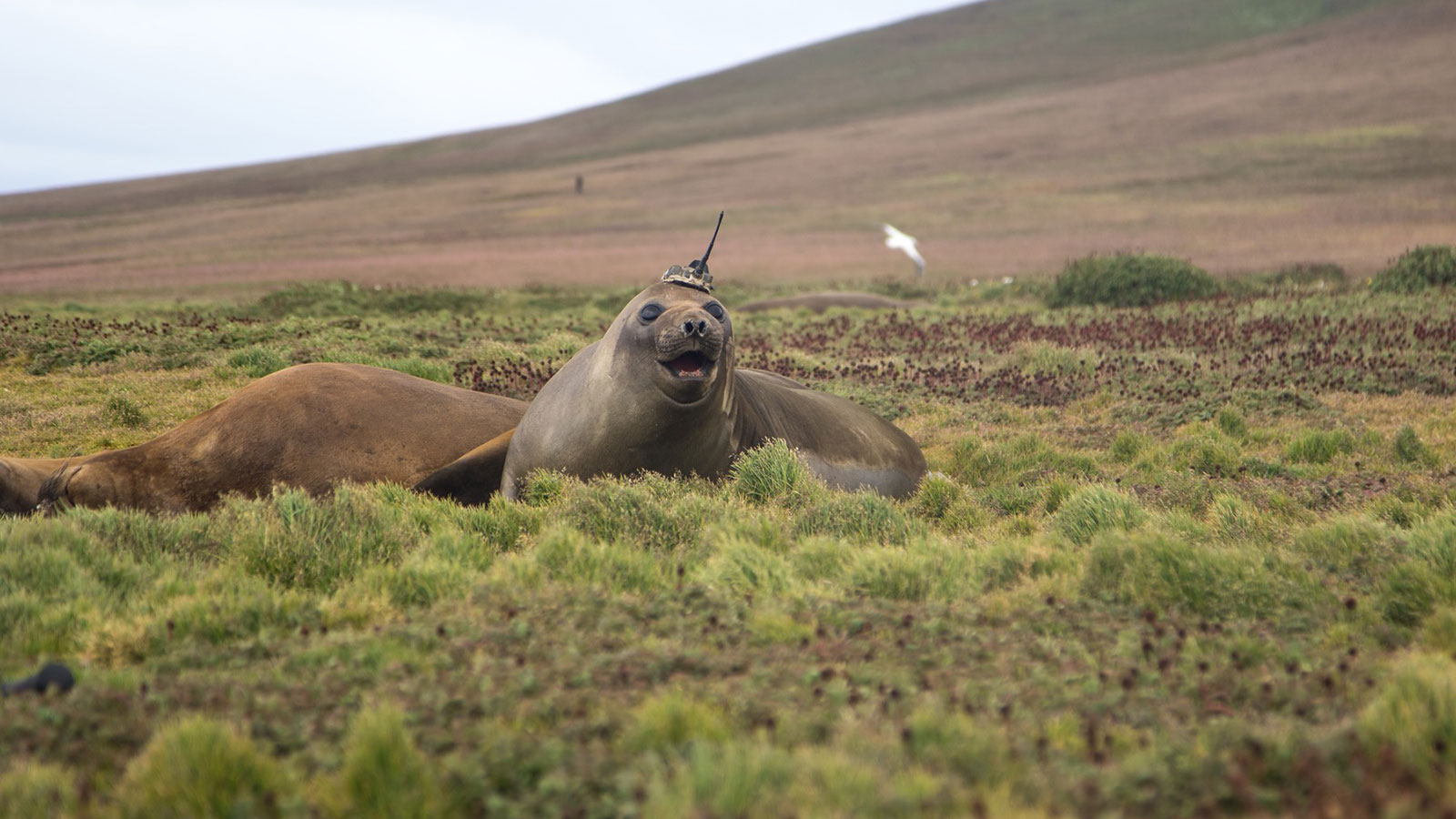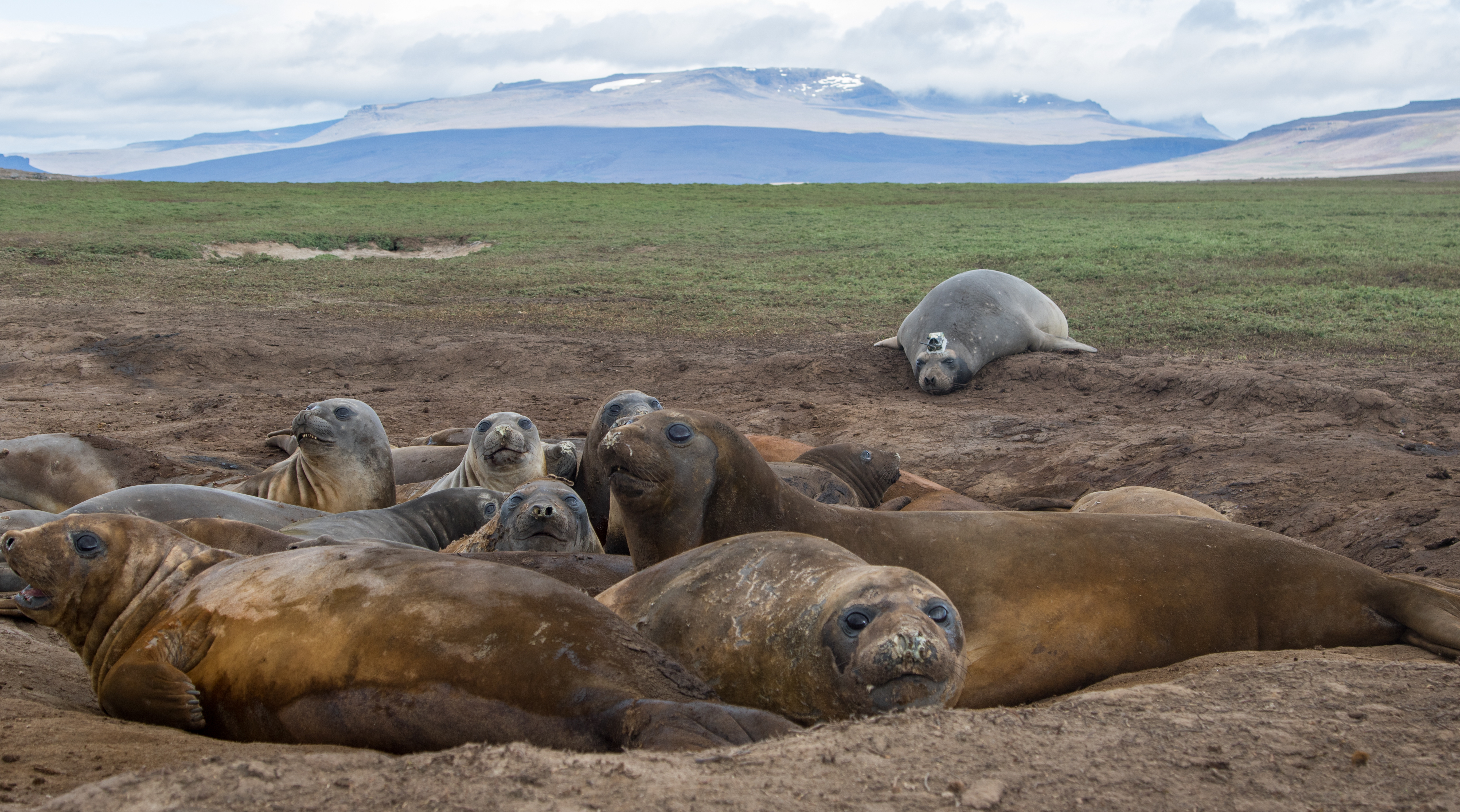NASA's New Climate Science Recruits Are Elephant Seals with Fancy Hats
Settle down, we'll get to the space stuff eventually, I promise.

Maybe you'd like to deride this seal's fashion choices. Here's why you shouldn't: While this isn't the most ornate fascinator ever to grace a photo shoot, it sparkles with science.
That's because the headpiece consists of an antenna plus a sensor that tracks the temperature of the ocean water the seal dives through. A NASA scientist is using data gathered by this sensor and others like it to better understand how oceans and currents are storing energy as the climate warms.
One particular female southern elephant seal was the star of the newest research published by the project. The seal's upgraded fascinator allowed scientists to gather data during every dive the animal made over the course of three months in the southern summer, from October 2014 to January 2015. These animals dive more than 80 times each day, and previous tags could collect data from only a few excursions daily.
Related: Wow! Ocean Glows an Ethereal Blue Under Milky Way's Starlight
(All told, scientists have been using seals to carry sensors into this area of the ocean for more than two decades. Researchers apply and remove the seals' fascinators while the animals are on land for breeding or to shed their skin; if a seal misses its tag retrieval, the apparatus falls off naturally during the animal's next molt.)
Unsurprisingly, seals are more efficient ocean explorers than humans are. All told, the southern elephant seal dived 6,333 times with its tag, reaching depths of up to 0.6 miles (1 kilometer). Most of the seal's dives, separated by breathing breaks at the surface, were much shallower than that milestone, but half saw the animal descend nearly 1,000 feet (300 meters).
The deeper dives were crucial for scientists hoping to understand the Antarctic circumpolar current's medium-size eddies, which can stretch 30 to 125 miles (50 to 200 km) across. These eddies create patches of denser and less dense water, which lead researcher Lia Siegelman, a visiting scientist at NASA's Jet Propulsion Laboratory in California, compared to atmospheric fronts in a statement.
Breaking space news, the latest updates on rocket launches, skywatching events and more!
Those eddies are traditionally tracked at the ocean's surface from space — yes, that's right, we promised you some space, and here we are! For the new research, Siegelman used data about the height of the ocean surface, which reflects the pressure of the water at that location.
The data came from satellites like NASA's Jason-2 oceanography mission, which launched in 2008, and the European Space Agency's CryoSat-2, which launched in 2010 to measure the thickness of ice. (Satellites will never be as charismatic as seals, but they're still impressive science tools.)
The seal data showed that these ocean fronts can reach 1,640 feet (500 m) deep, not just lingering at the ocean's surface as scientists had previously thought. These structures could funnel heat stored in the ocean back up to the surface, reducing the amount of energy that the ocean surface can store.
That finding is concerning for seals and spacefarers alike, because Earth's oceans are buffering the impact of human carbon emissions on climate. If scientists misunderstand the way heat moves through the ocean, that skews predictions for how our climate future will play out, the researchers argue.
"Inaccurate representation of these small-scale fronts could considerably underestimate the amount of heat transferred from the ocean interior back to the surface and, as a consequence, potentially overestimate the amount of heat the ocean can absorb," Siegelman said. "This could be an important implication for our climate and the ocean's role in offsetting the effects of global warming by absorbing most of the heat."
Of course, oceanographers and climate scientists are going to need a lot more than one seal with a funny hat to understand the future of our oceans and climate. In particular, Siegelman said she hopes to see similar research conducted in other locations and at other times of year.
No word on what other species might be eligible for science fascinators.
The research is described in a paper published Monday (Dec. 2) in the journal Nature Geoscience.
- Earth Day 2019: These Amazing NASA Images Show Earth from Above
- Earthrise: 50 Years Ago Today, Apollo 8 Changed Humanity's Vision of Earth Forever
- Photos: Underwater Astronauts Practice Space Exploration on Ocean Floor
Email Meghan Bartels at mbartels@space.com or follow her @meghanbartels. Follow us on Twitter @Spacedotcom and on Facebook.


Meghan is a senior writer at Space.com and has more than five years' experience as a science journalist based in New York City. She joined Space.com in July 2018, with previous writing published in outlets including Newsweek and Audubon. Meghan earned an MA in science journalism from New York University and a BA in classics from Georgetown University, and in her free time she enjoys reading and visiting museums. Follow her on Twitter at @meghanbartels.

